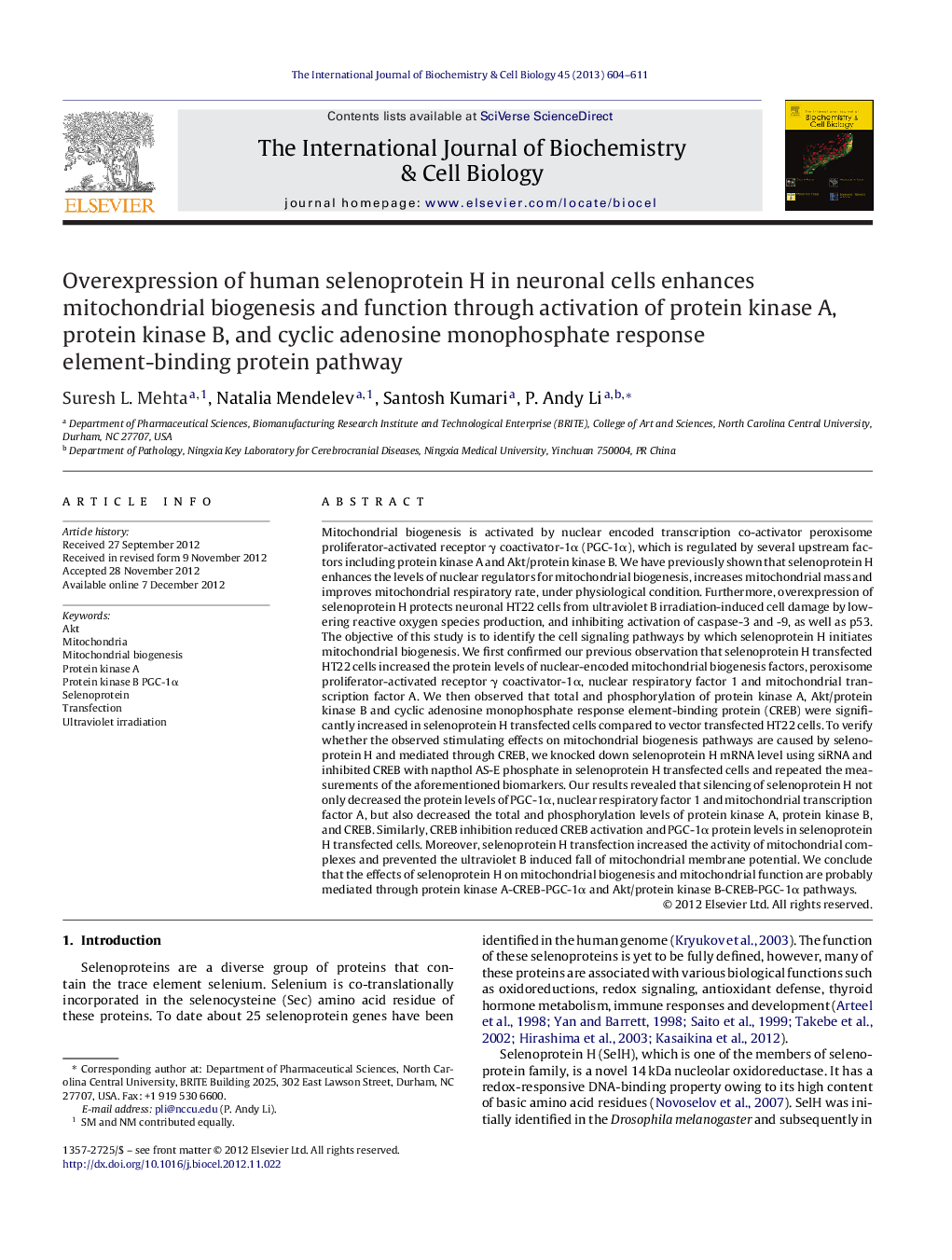| کد مقاله | کد نشریه | سال انتشار | مقاله انگلیسی | نسخه تمام متن |
|---|---|---|---|---|
| 1983615 | 1539908 | 2013 | 8 صفحه PDF | دانلود رایگان |

Mitochondrial biogenesis is activated by nuclear encoded transcription co-activator peroxisome proliferator-activated receptor γ coactivator-1α (PGC-1α), which is regulated by several upstream factors including protein kinase A and Akt/protein kinase B. We have previously shown that selenoprotein H enhances the levels of nuclear regulators for mitochondrial biogenesis, increases mitochondrial mass and improves mitochondrial respiratory rate, under physiological condition. Furthermore, overexpression of selenoprotein H protects neuronal HT22 cells from ultraviolet B irradiation-induced cell damage by lowering reactive oxygen species production, and inhibiting activation of caspase-3 and -9, as well as p53. The objective of this study is to identify the cell signaling pathways by which selenoprotein H initiates mitochondrial biogenesis. We first confirmed our previous observation that selenoprotein H transfected HT22 cells increased the protein levels of nuclear-encoded mitochondrial biogenesis factors, peroxisome proliferator-activated receptor γ coactivator-1α, nuclear respiratory factor 1 and mitochondrial transcription factor A. We then observed that total and phosphorylation of protein kinase A, Akt/protein kinase B and cyclic adenosine monophosphate response element-binding protein (CREB) were significantly increased in selenoprotein H transfected cells compared to vector transfected HT22 cells. To verify whether the observed stimulating effects on mitochondrial biogenesis pathways are caused by selenoprotein H and mediated through CREB, we knocked down selenoprotein H mRNA level using siRNA and inhibited CREB with napthol AS-E phosphate in selenoprotein H transfected cells and repeated the measurements of the aforementioned biomarkers. Our results revealed that silencing of selenoprotein H not only decreased the protein levels of PGC-1α, nuclear respiratory factor 1 and mitochondrial transcription factor A, but also decreased the total and phosphorylation levels of protein kinase A, protein kinase B, and CREB. Similarly, CREB inhibition reduced CREB activation and PGC-1α protein levels in selenoprotein H transfected cells. Moreover, selenoprotein H transfection increased the activity of mitochondrial complexes and prevented the ultraviolet B induced fall of mitochondrial membrane potential. We conclude that the effects of selenoprotein H on mitochondrial biogenesis and mitochondrial function are probably mediated through protein kinase A-CREB-PGC-1α and Akt/protein kinase B-CREB-PGC-1α pathways.
► SelH overexpression activates Akt, PKA and CREB.
► Silencing of selenoprotein H (SelH) alters mitochondrial biogenesis by decreasing mitochondrial biogenesis regulators PGC-1α, NRF1 and Tfam.
► SelH-induced mitochondrial biogenesis signaling is mediated through CREB and may involve Akt-CREB and PKA-CREB pathways.
► SelH overexpression improves mitochondrial functional performance by increasing the activities of mitochondrial respiratory chain complexes.
Journal: The International Journal of Biochemistry & Cell Biology - Volume 45, Issue 3, March 2013, Pages 604–611